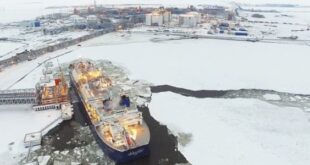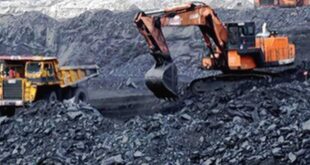The International Atomic Energy Agency chief on Wednesday exchanged views with the heads of local governments and fishermen around the crippled Fukushima nuclear power plant, a day after releasing a report endorsing the safety of Japan’s plan to discharge treated radioactive water into the sea.
Amid lingering worries about the plan, IAEA Director General Rafael Grossi said at a meeting in Iwaki between central government officials and local government heads that the IAEA will remain in the prefecture until all the water is safely released into the sea.
Grossi also promised the IAEA will keep ensuring the discharges are conducted in accordance with the plan over the several decades the process is expected to take.
The IAEA plans to inaugurate an office at the Fukushima power plant, which was devastated by a massive earthquake and ensuing tsunami in March 2011. It will provide live updates on the water discharge process on its website.
Local fishermen and some neighboring countries, including China, remain opposed to the plan out of concerns over the potential impact, including reputational damage to seafood products.
“Many people still think treated water is equal to contaminated water. We want (the government) to remove anxiety by deepening (public) understanding further,” said Jun Yoshida, mayor of Okuma, one of municipalities hosting the Fukushima Daiichi nuclear plant.
On Tuesday, the Vienna-based U.N. agency released a comprehensive report that concluded Japan’s water discharge plan is “consistent” with international safety standards and would have “a negligible radiological impact on people and the environment.”
The government and plant operator Tokyo Electric Power Company Holdings Inc. aim to begin releasing the water, processed to remove most radionuclides except tritium, around the summer.
Japan’s Nuclear Regulation Authority on Wednesday indicated that it will issue on Friday a certificate to TEPCO facilities at the plant involved in discharging the water to show they have passed inspections.
The body has completed inspections of the transfer facility, dilution facility and discharge facility after conducting similar inspections earlier this year to measure and confirm concentration levels of radioactive materials in the water.
During the three-day inspection from June 28, the regulators checked whether the whole system would function normally, including emergency isolation valves and equipment responsible for diluting treated water with seawater.
Prime Minister Fumio Kishida’s government will formally decide when to start releasing the water by taking into account the findings of Japan’s nuclear authorities and the IAEA.
The treated water will be diluted to one-40th of the concentration permitted under Japanese safety standards before being released via an underwater tunnel 1 kilometer off the power plant.

 Iran Energy News Oil, Gas, Petrochemical and Energy Field Specialized Channel
Iran Energy News Oil, Gas, Petrochemical and Energy Field Specialized Channel



